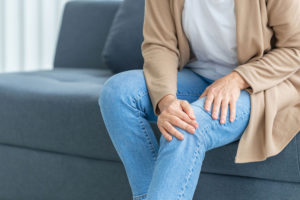
No, not usually. This is largely a myth.
There’s no conclusive evidence that weather changes directly cause joint pain, despite many people claiming they can forecast the weather based on their aches.
One theory of how there could be a link, is that shifts in atmospheric pressure might trigger these sensations. When air pressure drops, tissues around the joints can expand slightly, putting pressure on the joints and leading to pain.
But there is little evidence to support this theory.
For example, in a study by Ferreira et al (2024) (on 15,315 participants), seven musculoskeletal conditions and the weather were investigated.
No association was found between relative humidity, air pressure, temperature, or precipitation and the risk of rheumatoid arthritis, knee pain or low back pain.
High temperatures combined with low humidity were associated with increased pain, redness, and joint swelling in people with gout.
To keep joint pain (whether it is weather-related or not) at bay, it is a good idea to stay active with regular exercise and stretching. This can help keep your joints mobile and reduce stiffness.